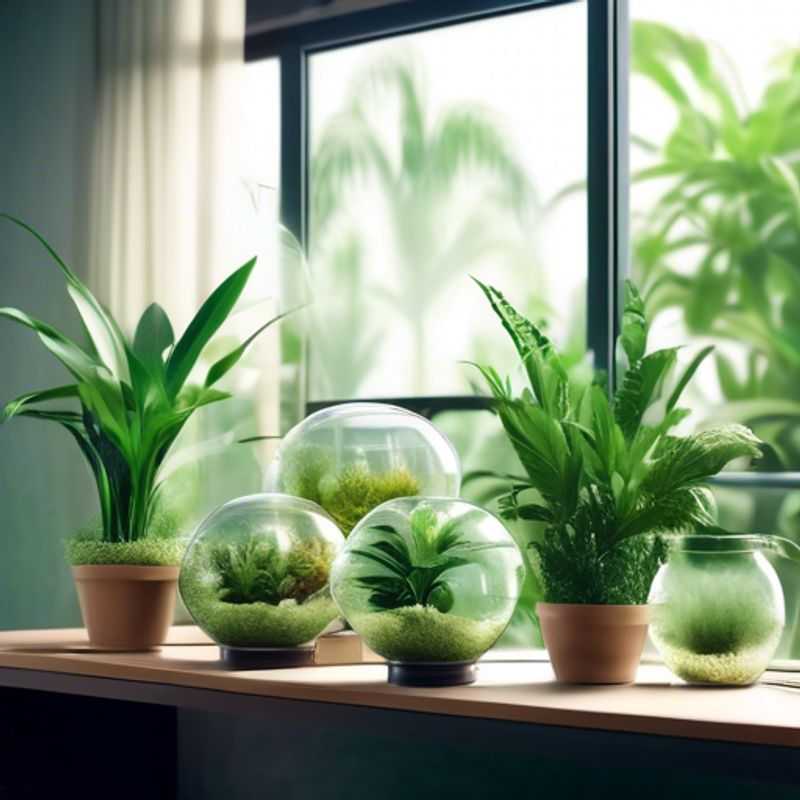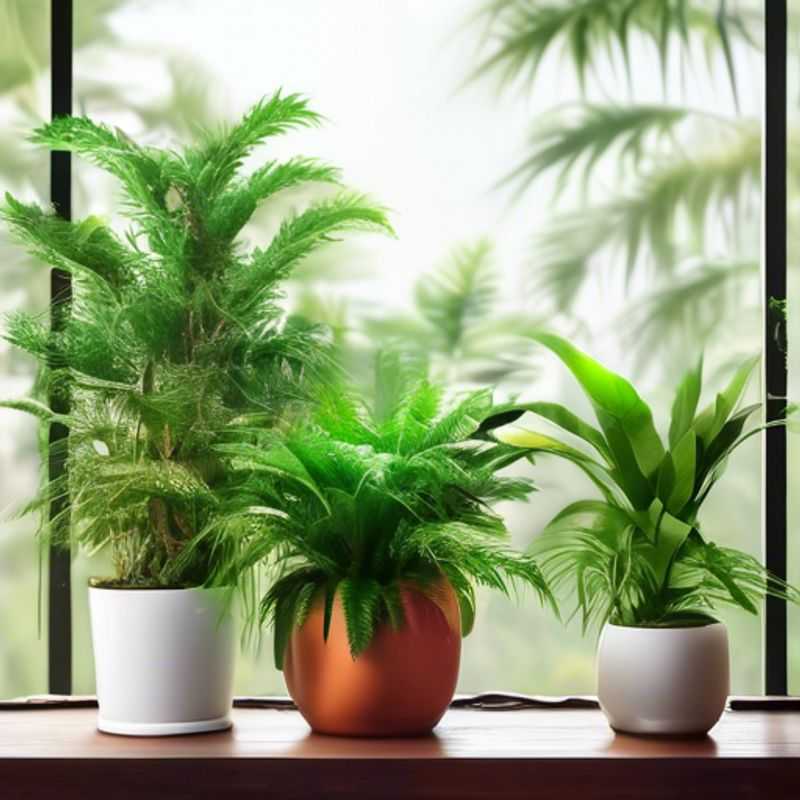Top 3 Things to Know Before Buying Air Purifying Plants

Air Purifying Plants: Boost Indoor Air Quality
Research Plant Capabilities: Choosing the Right Species
Proper Care: Maximizing Air Cleaning Benefits
Looking to breathe easier and create a healthier indoor environment?

Breathe Easy: How Air Purifying Plants Enhance Indoor Air Quality
Want to improve your indoor air quality? Consider adding some air-purifying plants to your home! These leafy friends can naturally filter out pollutants and increase oxygen levels, creating a healthier and more refreshing environment. While not a replacement for proper ventilation, they can make a significant difference.
Some popular choices include:
Snake Plant (Sansevieria trifasciata): This hardy plant is known for its air-purifying abilities, even in low light conditions. It's also a good option for beginners as it requires minimal care.
Peace Lily (Spathiphyllum wallisii): This beautiful plant can effectively remove volatile organic compounds (VOCs) from the air, such as formaldehyde and benzene. However, it's important to keep it away from pets as it can be toxic if ingested.
Spider Plant (Chlorophytum comosum): This easy-to-care-for plant is an excellent air purifier, removing pollutants like carbon monoxide and formaldehyde. It's also known for its ability to improve air humidity.
English Ivy (Hedera helix): This trailing plant is a powerful air purifier, removing pollutants like formaldehyde and benzene. It's also effective at reducing airborne mold spores.
Remember: Air purifying plants are a great addition to any home, but they don't replace proper ventilation. For optimal results, ensure your home is well-ventilated, and consider combining plants with other air purification methods, like HEPA filters. Enjoy the benefits of a cleaner, fresher indoor environment!

Choose the Right Plants: Understanding Air Purifying Capabilities
While plants can generally improve indoor air quality, their ability to remove specific pollutants varies significantly. You need to research the specific air purifying capabilities of different plant species to ensure you get the most effective options. NASA's Clean Air Study provides a great starting point for information. This study identified several houseplants that are effective at removing common indoor pollutants like formaldehyde, benzene, and ammonia.
Some of the most effective air-purifying plants include:
Snake Plant (Sansevieria trifasciata): This low-maintenance plant is highly effective at removing formaldehyde and other toxins.
Peace Lily (Spathiphyllum wallisii): This elegant plant removes benzene, formaldehyde, and trichloroethylene from the air.
English Ivy (Hedera helix): This plant can remove formaldehyde, benzene, and toluene, and is effective at removing airborne mold.
Spider Plant (Chlorophytum comosum): This easy-to-grow plant can remove carbon monoxide, formaldehyde, and xylene from the air.
Aloe Vera (Aloe vera): This plant is not only a popular remedy for burns, but it's also known to remove formaldehyde and benzene from the air.
When choosing air purifying plants, consider factors like the size of your space, light conditions, and your personal preferences. Remember, while plants can contribute to cleaner air, they are not a replacement for proper ventilation and other air purification methods.

Keep Your Air Purifying Plants Thriving: A Guide to Proper Care and Maintenance
Air-purifying plants are wonderful additions to any home, but they need proper care and maintenance to thrive and effectively clean the air. Here's a quick guide to keep your plant buddies happy and healthy:
Light: Most air purifying plants prefer bright, indirect light. Avoid placing them in direct sunlight, as this can scorch their leaves.
Watering: Allow the top inch of soil to dry out between waterings. Overwatering is a common cause of plant death, so be sure to let the soil dry out completely before watering again. Use filtered or room-temperature water for best results.
Humidity: Some air-purifying plants, like ferns and peace lilies, thrive in humid environments. You can increase humidity by placing a humidifier near the plant or by grouping plants together.
Fertilizer: Feed your air-purifying plants with a balanced liquid fertilizer once a month during the growing season (spring and summer). Avoid over-fertilizing, as this can damage the roots.
Pruning: Regularly remove dead or yellowed leaves to maintain the plant's health and appearance. Pruning also encourages new growth.
Cleaning: Dust can build up on plant leaves, reducing their ability to absorb light and photosynthesize. Wipe the leaves with a damp cloth to remove dust and keep them clean.
By following these simple tips, you can ensure your air-purifying plants thrive, providing clean air and a touch of nature to your home.
